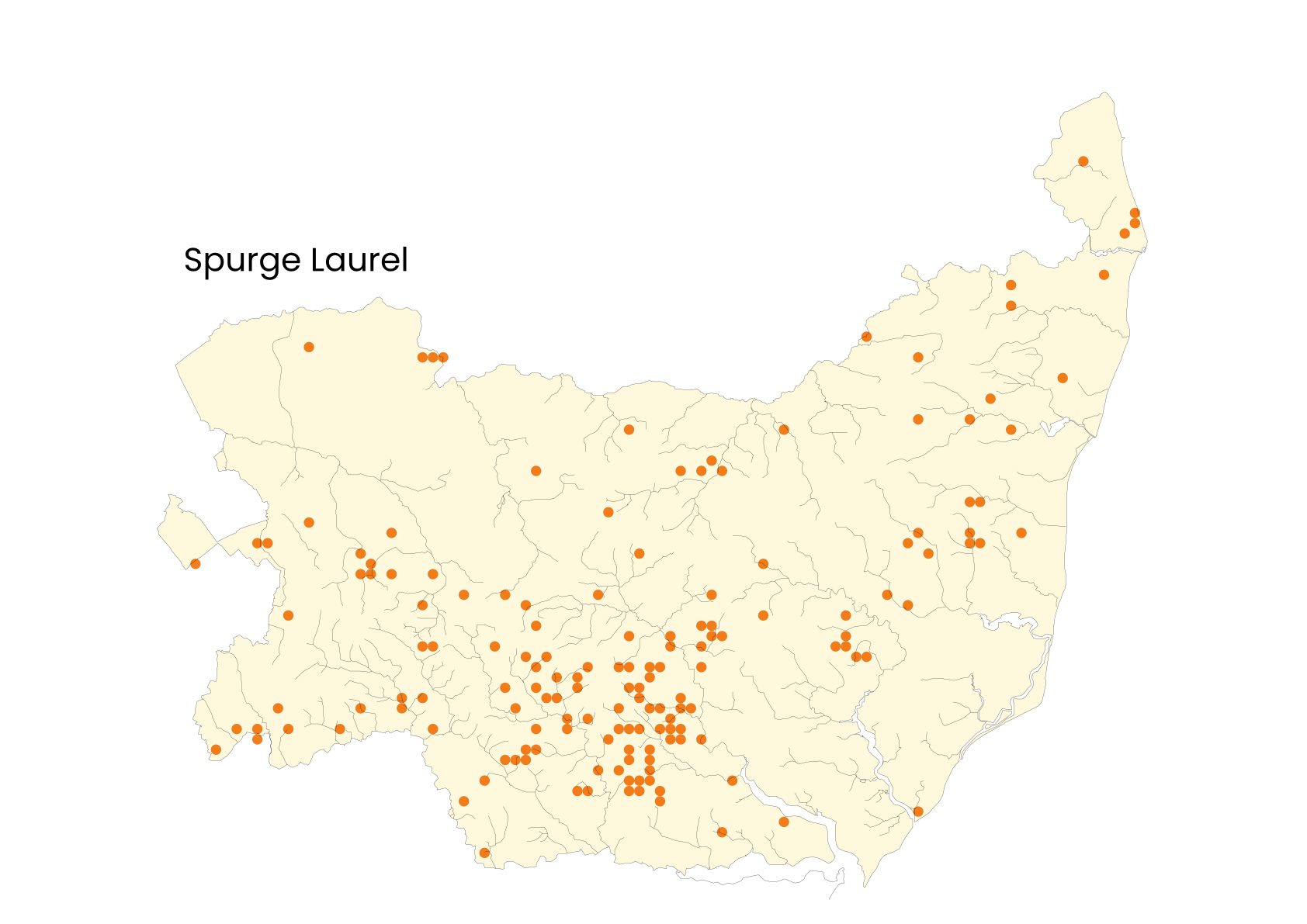
© Radu Scurtescu (iNaturalist)
Spurge laurel is an evergreen shrub with glossy leaves found in open woodlands and hedgerows; it is particularly fond of beech woods.
Despite its name, this shrub is neither a spurge nor a laurel - it’s one of two species of Daphne native to the UK.
It is a small shrub that typically grows to 1.2 meters tall and has dark green, shiny, narrow leaves around 2-5 cm long clustered at the top of each stem. The small, yellow-green, four-lobed flowers are tubular and borne in clusters of 3 to 10 in the axils of the upper leaves. They have a sweet fragrance but more honeyed than the cultivated D. odorata which is more lemony. They are followed by green, egg-shaped berries that ripen to black.

© Gail Hampshire (Flickr)
All parts of the plants are poisonous. For example, the sap is known to cause skin rashes on contact, and the berries are toxic to humans and other animals. But interestingly, it is not universally harmful; for instance, berries are eaten by birds without harm.
Some tribes in northern Africa still use an extract from the bark to poison fish.

© Gail Hampshire (Flickr)
It reproduces by self-layering and seed, but as it flowers in the early spring and requires cross-pollination by flies or moths, the seed set is often poor.

© Peganum (Flickr)
- Spurge Laurel: all parts are toxic
- Bay Laurel: leaves are used in cooking
Left: Spurge Laurel © Nicholas Turland (Flickr) Right: Laurel (Laurus nobilis) © Acabashi (Wikimedia) Slide bar to compare

Distribution in Suffolk
It has a widespread but scattered distribution across England and Wales and is usually regarded as a native plant. In Suffolk, Spurge Laurel is frequently found on the boulder clay and chalk regions, especially between Ipswich and Hadleigh. In other areas, it is occasionally found as an introduced plant in old parkland and churchyards and as single, possibly bird-sown, plants.

Habitat
It prefers heavy, neutral soils to chalky soils. It is found in deciduous woodland and old hedgerows and will thrive even in deep shade.
© --Tico-- (Flickr)
Did you know?
The origin of the Latin name Daphne appears to come from the water nymph whom the Gods turned into a laurel bush to hide from the advances of Apollo.
Apollo and Daphne by Bernini, Galleria Borghese © Sonse (Flickr)
© --Tico-- (Flickr)
Spotting Spurge Laurel
When to see: Year round
Flowers: January to April
If you are lucky enough to spot Spurge Laurel
in Suffolk don't forget to record your sighting!
